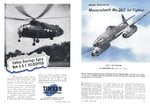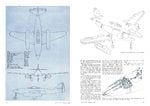MIflyer
1st Lieutenant
Time for a new WW2 design analysis. Here is one on the Me-262. First part is the airframe.
Attachments
-
 Me-262-Air-Avwk-1.jpg194.2 KB · Views: 958
Me-262-Air-Avwk-1.jpg194.2 KB · Views: 958 -
 Me-262-Air-Avwk-2.jpg163.2 KB · Views: 918
Me-262-Air-Avwk-2.jpg163.2 KB · Views: 918 -
 Me-262-Air-Avwk-3.jpg222.7 KB · Views: 986
Me-262-Air-Avwk-3.jpg222.7 KB · Views: 986 -
 Me-262-Air-Avwk-4.jpg188.6 KB · Views: 816
Me-262-Air-Avwk-4.jpg188.6 KB · Views: 816 -
 Me-262-Air-Avwk-5.jpg225.5 KB · Views: 948
Me-262-Air-Avwk-5.jpg225.5 KB · Views: 948 -
 Me-262-Air-Avwk-6.jpg248.1 KB · Views: 909
Me-262-Air-Avwk-6.jpg248.1 KB · Views: 909 -
 Me-262-Air-Avwk-7.jpg206.8 KB · Views: 971
Me-262-Air-Avwk-7.jpg206.8 KB · Views: 971 -
 Me-262-Air-Avwk-8.jpg227.7 KB · Views: 1,170
Me-262-Air-Avwk-8.jpg227.7 KB · Views: 1,170 -
 Me-262-Air-Avwk-9.jpg257.2 KB · Views: 845
Me-262-Air-Avwk-9.jpg257.2 KB · Views: 845 -
 Me-262-Air-Avwk-10.jpg170.7 KB · Views: 1,313
Me-262-Air-Avwk-10.jpg170.7 KB · Views: 1,313


